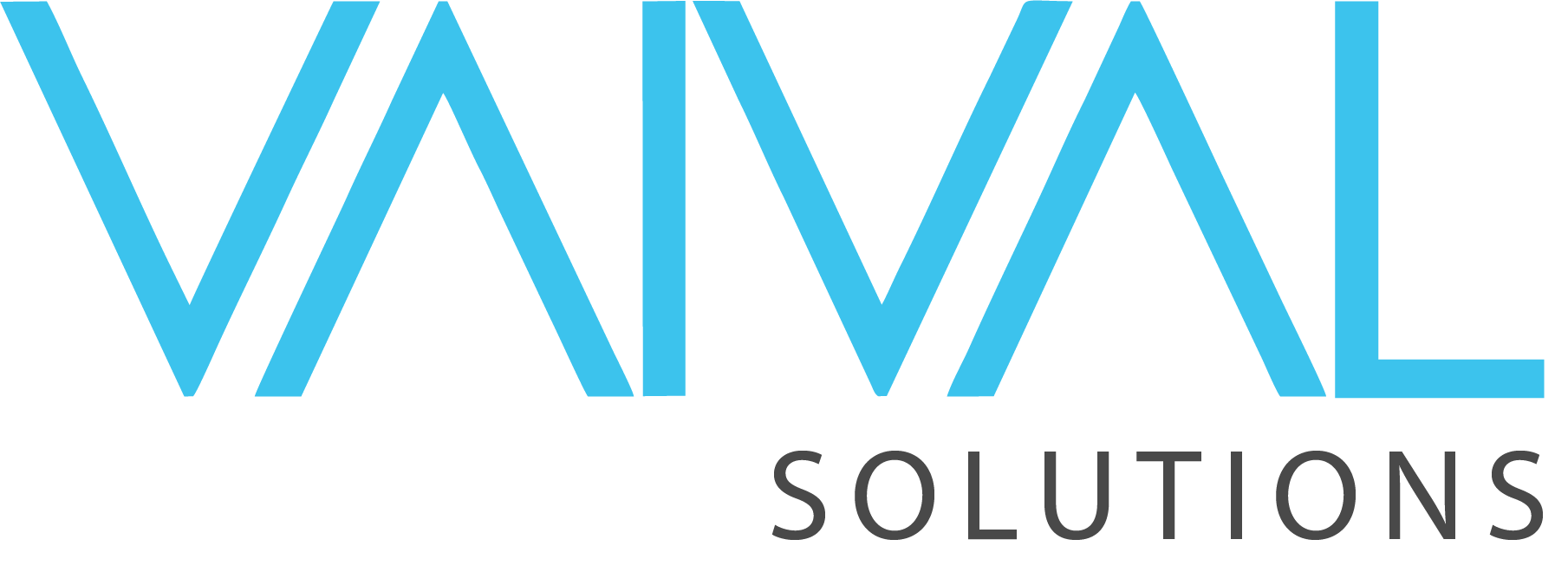- May 22, 2023
- Posted by: Muhammad Shoaib Afzal
- Category: III. Purchase Module
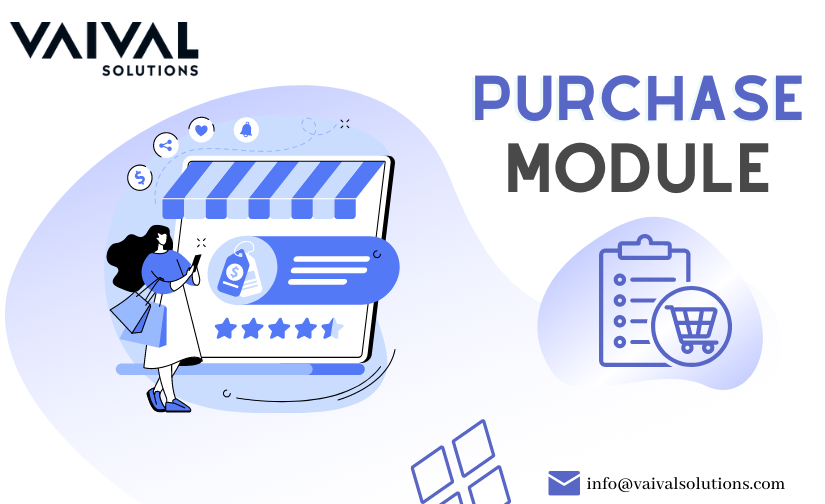
PURCHASE MODULE
Vaival Solutions’ purchase module offers a comprehensive suite of tools and features to optimize your procurement workflow, from vendor management and purchase requisition to purchase orders and invoice processing. With its user-friendly interface and customizable functionalities, Vaival Solutions empowers businesses to make informed purchasing decisions, enhance supplier relationships, and drive cost savings.

In Vaival ERP system we offer two types of Purchase Invoice in the Purchase Module:
1-Purchase Invoice (companies that do not follow a purchase cycle)
Companies who do not wish to use the complete purchase cycle can use this screen for adding Foreign currency and Local currency Invoices. Here, for using Foreign currency transactions you have to open a vendor in Foreign currency as shown below. If you don’t know how to add vendors please read our blog on Business Setup. After you have opened a foreign currency vendor you can add the transaction from the Purchase invoice screen, figure attached below.
Figure: Business Setup > Vendor Center
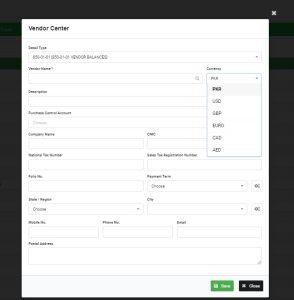
Figure: Purchase Module > Purchase Invoice
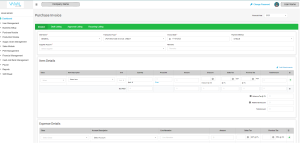
2-Purchase Cycle (Companies that follow purchase cycle)
This Purchase Cycle is used by local manufacturing companies as it involves traditional steps and it starts from Purchase Requisition P.R, Purchase Order P.O, Inward gate pass I.G.P, Good Receipt Note G.R.N, and ends at Purchase Invoice P.I. They are interlinked to each other. Documents are generated in each step to assist the user in managing and keeping up with evidence of transactions. This module is integrated with financial statements. All the data entered in these screens automatically reflect in the reporting module and also in the dashboard once you approve.

Purchase Requisition
The first screen related to the Purchase cycle in the Vaival ERP system is a purchase requisition. It is a document that is used to request the purchase of goods or services from a vendor or supplier.
The purchase requisition is generated typically when an employee identifies a need for goods or services and creates a purchase requisition in the ERP system. The purchase requisition is then routed through an approval process.
Figure: Purchase Module > Purchase Requisition
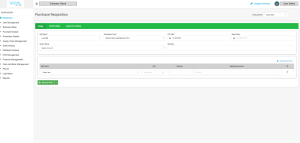
A- Draft Listing
This screen allows you to edit, view, add notes and add attachment from the highlighted icons. You can approve/cancel the Purchase requisition that is in draft. You can also choose to view the drafts of a whole financial year from the Financial Year filter. A draft that is canceled is deleted from the system. Approved drafts appear in the Approved Listing as record.
Figure: Purchase Module > Purchase Requisition > Draft Listing

B- Approve Listing:
All the data after approval goes in the approved listing and only this data is going to reflect in Financial Statements.
Figure: Purchase Module > Purchase Requisition > Approve Listing

B- Purchase Order (P.O)
The purchase order is the second screen of the Purchase cycle in Vaival ERP and it can be proceeded by Purchase Requisition reference # or can be made without using the reference of P.R, if you are using the reference then you just need to add the rate of Inventories and discount, taxes and attachments, if you are using making PO directly you have to add the required information.
Figure: Purchase Module > Purchase Order
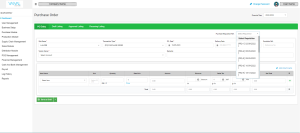
A- Draft Listing
This screen allows you to edit, view, add notes and add attachment from the highlighted icons. You can approve/cancel the Purchase Order that is in draft. You can also choose to view the drafts of a whole financial year from the Financial Year filter. A draft that is canceled is deleted from the system. Approved drafts appear in the Approved Listing as record.
Figure: Purchase Module > Purchase Order > Draft Listing
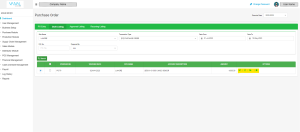
B- Approve Listing:
All the data after approval goes in the approved listing and only this data is going to reflect in Financial Statements.
Figure: Purchase Module > Purchase Order > Approve Listing

C- Recurring Listing:
This feature is added to assist you with repeated and sequential data entry. You can add a recurring order, when you add a regular order in the Vaival ERP purchase order screen you can click on the dropdown by the side of “Save as Draft” from that dropdown select “Save as Recursion”.
Figure: Purchase Module > Purchase Order > Recurring Listing 1

Figure: Purchase Module > Purchase Order > Recurring Listing 2

Inward Gate Pass
The inward gate pass is the third screen of the purchase cycle and it is generated by the receiving department when goods or materials are delivered to the company’s premises.
In Vaival ERP the Inward Gate Pass is created by using the reference # of PO. As per the operational capacity of the company, one vendor may have more than one POs in que. So the person generating the Inward Gate pass must select the PO carefully and after checking the items physically this should be added to reduce chances of error.
Figure: Purchase Module > Inward Gate Pass

A- Draft Listing
This screen allows you to edit, view, and add attachment from the highlighted icons. You can approve/cancel the Purchase Order that is in draft. You can also choose to view the drafts of a whole financial year from the Financial Year filter. A draft that is canceled is deleted from the system. Approved drafts appear in the Approved Listing as record.
Figure: Purchase Module > Inward Gate Pass > Draft Listing
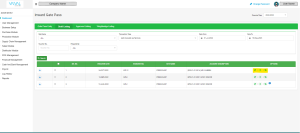
B- Approve Listing:
All the data after approval goes in the approved listing and only this data is going to reflect in Financial Statements.
Figure: Purchase Module > Inward Gate Pass > Approve Listing
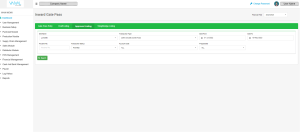
C- Weighbridge Listing:
We also offer an integrated weighbridge module that streamlines the process of weighing and recording goods. It captures accurate measurements and automatically updates the ERP database in real-time. This integration ensures seamless data synchronization, eliminating the need for manual data entry and reducing the risk of errors. You can use this feature through this screen.
Figure: Purchase Module > Inward Gate Pass > Weighbridge Listing
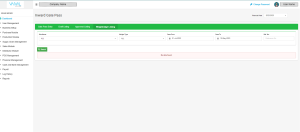
Good Receipt Note (GRN)
The fourth screen of the purchase cycle is Goods Receipt Note (GRN), the GRN is also created by the receiving department when goods or materials are delivered to the company’s gate after physical counting. The document is used to confirm that the goods or materials have been received as expected, and returned, in case of faulty or expired goods or material. Here, you have to select the specific vendor and its reference IGPs will appear as shown in the figure below, from the drop down menu you select the IGP and the system automatically fetches the data. After saving the transaction, the system will update the company’s inventory records and then route it towards Purchase Invoice.
Figure: Purchase Module > Goods Receipt Note
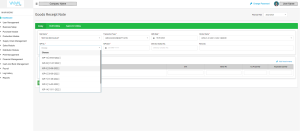
A- Draft Listing
This screen allows you to view, add notes and add attachment from the highlighted icons. You can approve/cancel the Goods Receipt Note that is in draft. You can also choose to view the drafts of a whole financial year from the Financial Year filter. A draft that is canceled is deleted from the system. Approved drafts appear in the Approved Listing as record.
Figure: Purchase Module > Goods Receipt Note > Draft Listing

B- Approve Listing:
All the data after approval goes in the approved listing and only this data is going to reflect in Financial Statements.
Figure: Purchase Module > Goods Receipt Note > Approve Listing
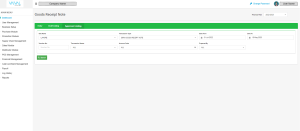
Purchase Invoice
This is the last screen of the purchase cycle, here, you have to select the specific vendor and its reference GRN will appear as shown in the figure below, from the drop down menu you select the GRN and the system automatically fetches the data. After saving the transaction, the system will generate a Purchase Invoice.
Figure: Purchase Module > Purchase Invoice
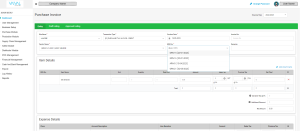
A- Draft Listing
This screen allows you to view, add notes and add attachment from the highlighted icons. You can approve/cancel the Purchase Invoice that is in draft. You can also choose to view the drafts of a whole financial year from the Financial Year filter. A draft that is canceled is deleted from the system. Approved drafts appear in the Approved Listing as record.
Figure: Purchase Module > Purchase Invoice > Draft Listing
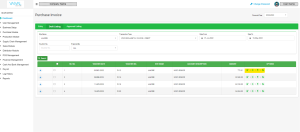
B- Approve Listing:
All the data after approval goes in the approved listing and only this data is going to reflect in Financial Statements.
Figure: Purchase Module > Purchase Invoice > Approve Listing

Opening Inventory:
The opening inventory screen of Vaival Solutions ERP offers a user-friendly interface for managing initial inventory levels. The screen provides options to categorize inventory by various criteria such as transaction type, site etc. This feature also enables users to import or export opening inventory data in bulk, simplifying the initial setup process. With real-time synchronization, changes made on the opening inventory screen are instantly reflected across the entire ERP system, ensuring accurate inventory management from the start.
Figure: Purchase Module > Opening Inventory
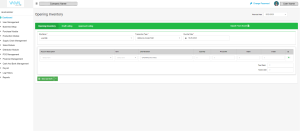
A- Draft Listing
This screen allows you to view, add notes and add attachment from the highlighted icons. You can approve/cancel the Opening Inventory that is in draft. You can also choose to view the drafts of a whole financial year from the Financial Year filter. A draft that is canceled is deleted from the system. Approved drafts appear in the Approved Listing as record.
Figure: Purchase Module > Purchase Invoice > Draft Listing
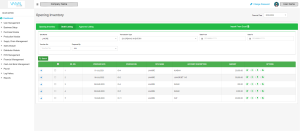
B- Approve Listing:
All the data after approval goes in the approved listing and only this data is going to reflect in Financial Statements.
Figure: Purchase Module > Purchase Invoice > Approve Listing

Table of Contents
